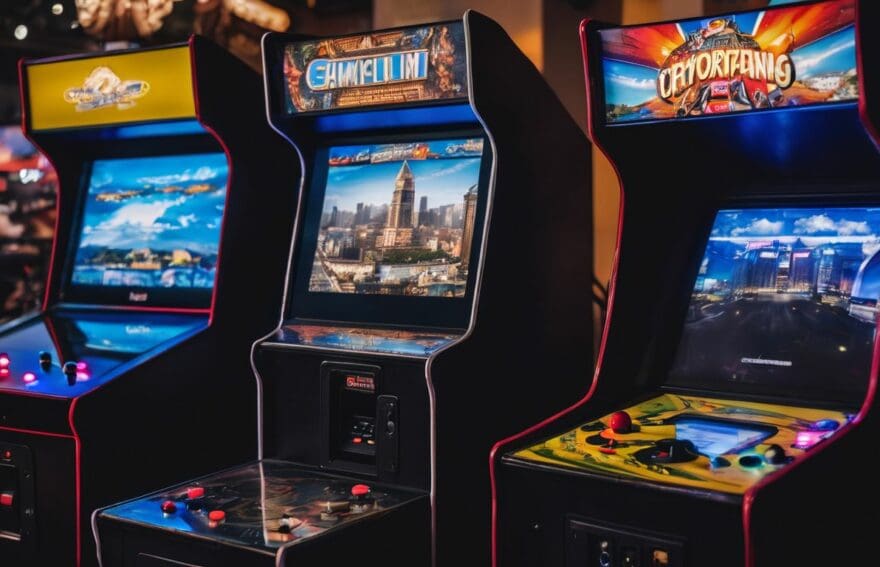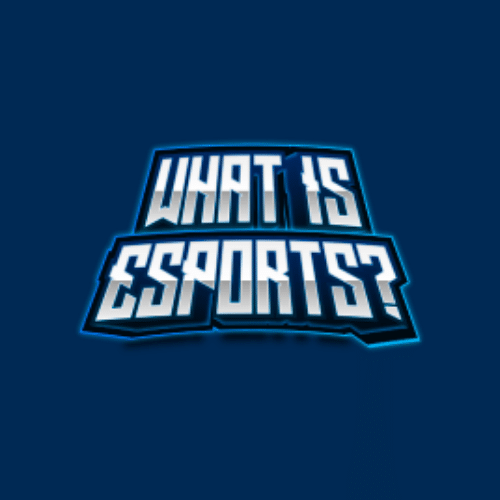Balancing Act: Game Patches and Their Impact on the FGC

Updated On: February 14, 2024 by 
Every gamer knows the frustration of an unbalanced fighting game – it’s akin to trying to emerge victorious in a duel whilst effectively being shackled by one arm. We’ve all felt that irritation, sifting through the endless stream of patch notes, haven’t we? Hence, we’ve thoroughly delved into the depths to truly decipher how these updates ripple through the FGC (Fighting Game Community).
In this piece, we’re set on guiding you through the nuances of balance in games, exploring how developers tirelessly labour towards equity within our beloved digital arenas and just what impact those patches have on your cherished brawlers.
Stick with us – this insight may very well give you a leg up in your next skirmish!
Key Takeaways
- Game patches play a pivotal role in ensuring fairness within the Fighting Game Community by fine-tuning character strengths and game mechanics.
- Developers engage with player feedback from the FGC to guide their patch updates, aiming for an inclusive experience for both new players and seasoned competitors.
- The introduction of new DLC characters and balance changes through patches keeps the fighting game meta fresh, requiring players to constantly adapt their strategies.
- Balancing does not always equate to making every character equally strong; it involves creating a competitive environment where skill, strategy, and creativity determine victory.
- Maintaining a healthy competitive scene is fundamental for developers; thus they must carefully consider each patch’s impact on gameplay dynamics and overall balance in the FGC.
Understanding Game Balance
Understanding game balance is crucial in the world of fighting games. It’s more than just making sure every character is equally strong – it’s about creating an environment where players can have fun and feel challenged, no matter their skill level.
The psychology behind game balance and its impact on player experience is a key factor to consider.
Defining “balanced”
In the realm of competitive gaming, ‘balanced’ means creating an even playing field where no single character, strategy, or combo overwhelms all others. It’s a delicate dance we’re constantly fine-tuning with game updates and patches.
Every fighter in our roster should stand a fair chance of winning when skill is the deciding factor – not just because they have access to overpowered moves.
We listen closely to player feedback from the Fighting Game Community (FGC) to pinpoint areas that might tip the scales too heavily in one direction. Achieving game balance is crucial; it ensures matches are won by strategy, quick reflexes and creative combo design rather than exploiting certain gameplay elements.
Our goal is to make every session enjoyable for novices and pros alike without allowing any part of our beloved fighting games become stale or unfair.
Different scales for different games
Balancing games is a complex process that varies across different titles. Each game has its unique set of mechanics, characters, and player dynamics, making it crucial to adjust the balance accordingly.
From multiplayer dynamics to tier lists and DLC content, every aspect influences the balancing act in diverse ways. The challenge lies in understanding these intricacies and tailoring balance updates to suit each game’s specific requirements while maintaining fairness and fun for all players.
Game development needs to consider the impact of balance changes on fighting game competition and the evolving meta. This involves constant adjustments based on player feedback, ensuring that competitive balance remains a top priority amidst ongoing patches and updates.
The psychology of game balance
As we consider the importance of balance in games, it’s vital to delve into the psychology behind achieving this equilibrium. Players seek fair play and a level field that caters to both beginners and seasoned gamers.
Understanding what is “balanced” can vary across different game genres and types, but at its core, it aims to create an enjoyable experience for all involved. Dive deeper into individual motivations, as well as player perceptions of fairness and challenge within gaming environments.
The right balance fosters engagement by providing the necessary difficulty adjustment while avoiding becoming repetitive or frustrating.
Depth does not always equal balance
Game depth does not automatically guarantee game balance. While a complex, intricate game can be engaging and immersive, it does not necessarily translate to fair and balanced gameplay.
Developers need to carefully consider the interplay between depth and balance to ensure that players have an enjoyable and competitive experience. The challenge lies in creating games that are rich in mechanics and strategies while maintaining fairness for all players, regardless of their skill level or experience.
The perception of fairness is essential for player satisfaction and retention. As game patches continue to shape the meta of fighting games, developers face the ongoing task of striking a delicate balance between depth and accessibility, catering to both dedicated enthusiasts as well as new players entering the scene.
The importance of balance for fun
Achieving balance in fighting games contributes significantly to the overall enjoyment and fun factor for players. When characters or mechanics are too powerful, it can lead to frustration and reduced enjoyment of the game.
Maintaining a fair and balanced playing field is essential for creating an environment where players of all skill levels can compete on equal footing, fostering a sense of accomplishment and satisfaction.
The subtle interplay between character abilities and gameplay mechanics directly impacts the fun experienced by gamers. Fairness and equality play pivotal roles in ensuring that every player has an opportunity to engage fully in the gaming experience without feeling disadvantaged due to imbalanced elements within the game.
How Developers Create Balance
Developers use a rigorous process to balance games, from testing and checking for balance to considering player feedback. The role of solvability is also crucial in the effort to create balanced gameplay experiences for players.
The process behind balancing games
- Analysing win rates, usage statistics, and community feedback to identify overpowered or underpowered characters.
- Making adjustments to moves, frames, hitboxes, and properties to align with the game’s intended balance.
- Testing changes rigorously in controlled environments before implementing them into the live game.
- Balancing offensive and defensive options to create an engaging and fair gameplay experience.
- Adjusting character abilities or mechanics that may be disrupting the overall balance of the game.
- Collaborating closely with professional players and esports organisations to gather insights for effective balancing strategies.
Testing and checking for balance
After understanding the process behind balancing games, testing and checking for balance becomes a crucial aspect in ensuring fair gameplay. Here are some key steps involved in this process:
- Developers conduct extensive playtesting to analyse how different characters and mechanics interact with one another.
- Data analysis is employed to evaluate win rates, usage statistics, and other relevant metrics to identify any imbalances or unfair advantages.
- Player feedback is gathered through various channels, including forums, surveys, and direct communication with the community to understand their experiences and concerns.
- Iterative adjustments are made based on the collected data and feedback to fine – tune character abilities, move properties, and overall game mechanics.
- Quality assurance teams rigorously test the implemented changes to ensure they function as intended without introducing new issues or unintended consequences.
- Patches undergo internal review processes where developers thoroughly examine the impact of changes on the game’s overall balance before releasing them to the public.
- Continuous monitoring of game data post-patch release allows developers to assess the real-world effects of their adjustments and make further refinements if necessary.
- Transparency in sharing patch notes detailing all balance changes helps players understand how their favourite characters have been adjusted and encourages informed discussion within the community.
The role of solvability
Developers frequently consider solvability when balancing fighting games. It refers to how solve-able a game is – how predictable its outcomes are. This concept helps maintain competitive fairness and allows players to invest time in mastering the game’s mechanics.
Solvability is crucial for preventing dominant strategies from emerging, ensuring that every character has a chance at victory.
Understanding the role of solvability in game balance is essential for creating an enjoyable and competitive atmosphere within the FGC. It requires developers to carefully craft game mechanics and character abilities, considering factors such as combo potential and move effectiveness to ensure that no single approach dominates gameplay.
Dealing with complaints and player feedback
When player complaints or feedback arise, developers engage with the Fighting Game Community (FGC) to address concerns and make necessary adjustments. We take into account the impact of patches on character balance, mechanics, and overall gameplay experience.
Balancing includes assessing DLC characters, meta changes, and their influence on the tournament scene. Adapting to these updates requires reading patch notes carefully for a better understanding of changed mechanics in fighting games.
Player feedback is crucial in maintaining fairness across all game elements such as combos and chains. This ongoing process necessitates continuous adjustments based on community responses to ensure a balanced competitive environment within the FGC.
Impact of Patches on Fighting Games
Game patches have the potential to drastically change the dynamics of fighting games, affecting character variety, mechanics, and shaping the meta of modern fighting games. Want to learn more about how patches impact the FGC? Keep reading!
Effects on character variety
Game patches have a significant impact on character variety in fighting games. By adjusting the strength and weaknesses of different characters, developers can encourage players to explore new strategies and playstyles.
This not only keeps the gameplay fresh and exciting for seasoned players but also creates opportunities for novice gamers to find their preferred character without feeling disadvantaged.
Character variety is crucial in maintaining a healthy competitive scene within the FGC. Game patches that address character balance issues can lead to a more diverse pool of viable fighters, allowing players to showcase their skills with a wider range of characters.
The potential for changing mechanics
Game patches have the potential to alter the fundamental mechanics of fighting games, such as movement speed, attack range, and combo properties. These changes can significantly impact the way players approach and strategise during matches.
With each patch, developers carefully assess how adjusting these mechanics could enhance overall game balance while keeping gameplay fresh and dynamic.
Incorporating new mechanics or tweaking existing ones through patches can revitalise gameplay experiences for both novice and seasoned gamers. This constant evolution of game mechanics keeps the Fighting Game Community (FGC) engaged and excited about exploring new strategies with their favourite characters.
Shaping the meta of modern fighting games
Balancing game patches profoundly impacts the current state of modern fighting games. Developers strive to shape the meta by carefully considering the impact of updates and adjustments on character variety, mechanics, and overall gameplay.
The FGC’s evolution is greatly influenced by these changes, leading to a constant shift in competitive strategies and playstyles.
Patches not only keep the gaming experience fresh but also pose challenges for players to adapt and innovate their approach. As new characters and mechanics are introduced or altered, understanding how these changes shape the meta becomes crucial for staying competitive in today’s dynamic fighting game landscape.
The Evolution of Balancing in Fighting Games
The shift from the classic era of fighting games to the modern era has brought about significant changes in how balance is maintained. With the introduction of patches, balancing has become an ongoing process that continues to shape the competitive landscape of fighting games.
The shift from classic to modern era
The evolution of balancing in fighting games has seen a significant shift from the classic era to the modern era. In the past, once a game was released, it remained as is with no room for adjustments or improvements.
However, with the rise of online gaming and technological advancements, developers can now release patches and updates to address balance issues and improve gameplay based on player feedback.
Patches have become an integral part of modern fighting games, allowing developers to fine-tune character abilities and mechanics over time. This shift has led to a more dynamic playing experience for gamers in the FGC, contributing to a constantly evolving meta and keeping competitive scenes fresh and engaging.
How patches have affected the FGC
Game patches have significantly impacted the Fighting Game Community (FGC), reshaping the competitive landscape. These updates often lead to shifts in character strengths and weaknesses, influencing player strategies and challenging long-established gameplay norms within the FGC.
As a result, players are constantly adapting their skills and tactics to stay ahead in this ever-evolving environment.
Developers closely monitor the impact of these patches on the FGC, striving to maintain fairness and balance amidst a dynamic competitive scene. The adjustments made through patches demonstrate ongoing efforts to ensure that all characters remain viable choices for players, thereby elevating the standard of play within the FGC.
Balancing for Fair Competition
The role of DLC characters and balance changes in fighting games can have a significant impact on competitive play. It is essential for game developers to maintain a healthy competitive scene by carefully considering the effects of patches on game balance.
The role of DLC characters and balance changes
Developers often introduce downloadable content (DLC) characters and make balance changes to fighting games to keep the meta fresh and maintain a fair competitive environment. The addition of DLC characters brings new dynamics, altering the existing roster and potentially impacting character variety within the game.
These updates also serve as an opportunity for developers to address any imbalances or issues that may have arisen in previous iterations, ensuring that the gameplay experience remains engaging for all players.
Balancing changes play a crucial role in maintaining fairness within the game’s competitive scene. Implementing adjustments through patches allows developers to respond to feedback from the Fighting Game Community (FGC), making necessary modifications to keep the playing field even.
The impact on competitive play
Game patches have a significant impact on the competitive play of fighting games in the FGC. The introduction of new balance changes, character tweaks, and mechanic adjustments can shift the dynamics of competitive matches.
Players need to stay adaptable and agile in their strategies to keep up with these developments, as they influence the meta and require continuous refinement of gameplay techniques.
Adapting to game patches is essential for maintaining a competitive edge in the FGC. The evolving landscape means that players must be diligent in studying and understanding patch notes, as well as incorporating new tactics into their repertoire to stay ahead of the competition.
Maintaining a healthy competitive scene
Developers continually strive to maintain a fair and competitive environment within the Fighting Game Community (FGC). The impact of game patches on character balance, mechanics, and overall gameplay significantly influences the competitive scene.
As passionate gamers, we must adapt to these changes by carefully analysing patch notes and understanding how they affect our playstyle. Maintaining a healthy competitive scene requires embracing the evolution of game balance while pushing for fairness in every match.
The FGC’s diversity can flourish as we navigate through various patches and updates, shaping an ever-changing competitive landscape driven by balanced gameplay.
Conclusion
In conclusion, understanding the impact of game patches on the FGC is crucial for maintaining a fair and balanced competitive environment. Adapting to changes in balance through patches requires active engagement from players and developers alike.
The ongoing evolution of game balancing in fighting games underscores the importance of continuous adjustments and fine-tuning. Keeping an open dialogue between developers and the FGC community will be essential for ensuring that future balance updates are well-received and beneficial for all involved.
Maintaining a healthy competitive scene hinges on the careful consideration of the impact of game patches while striving for fairness across all levels of play.
FAQs
1. What is a game patch in the context of the FGC?
A game patch is an update from game developers that adjusts elements within video games to maintain balance and enhance the playing experience for the Fighting Game Community (FGC).
2. How do patches affect gamers in the FGC?
Patches can dramatically change how games are played by fixing bugs, balancing character abilities, and adding new content, which impacts competitiveness and strategies within the FGC.
3. Why are game patches important for game development?
Game patches are crucial because they address issues, improve performance, and keep games fair and enjoyable over time which is essential for retaining players in a competitive environment like that of the FGC.
4. Can players influence what goes into a game patch?
Yes, feedback from players often guides developers on what changes or fixes should be included in a game patch to ensure an optimal experience for members of the FGC.


